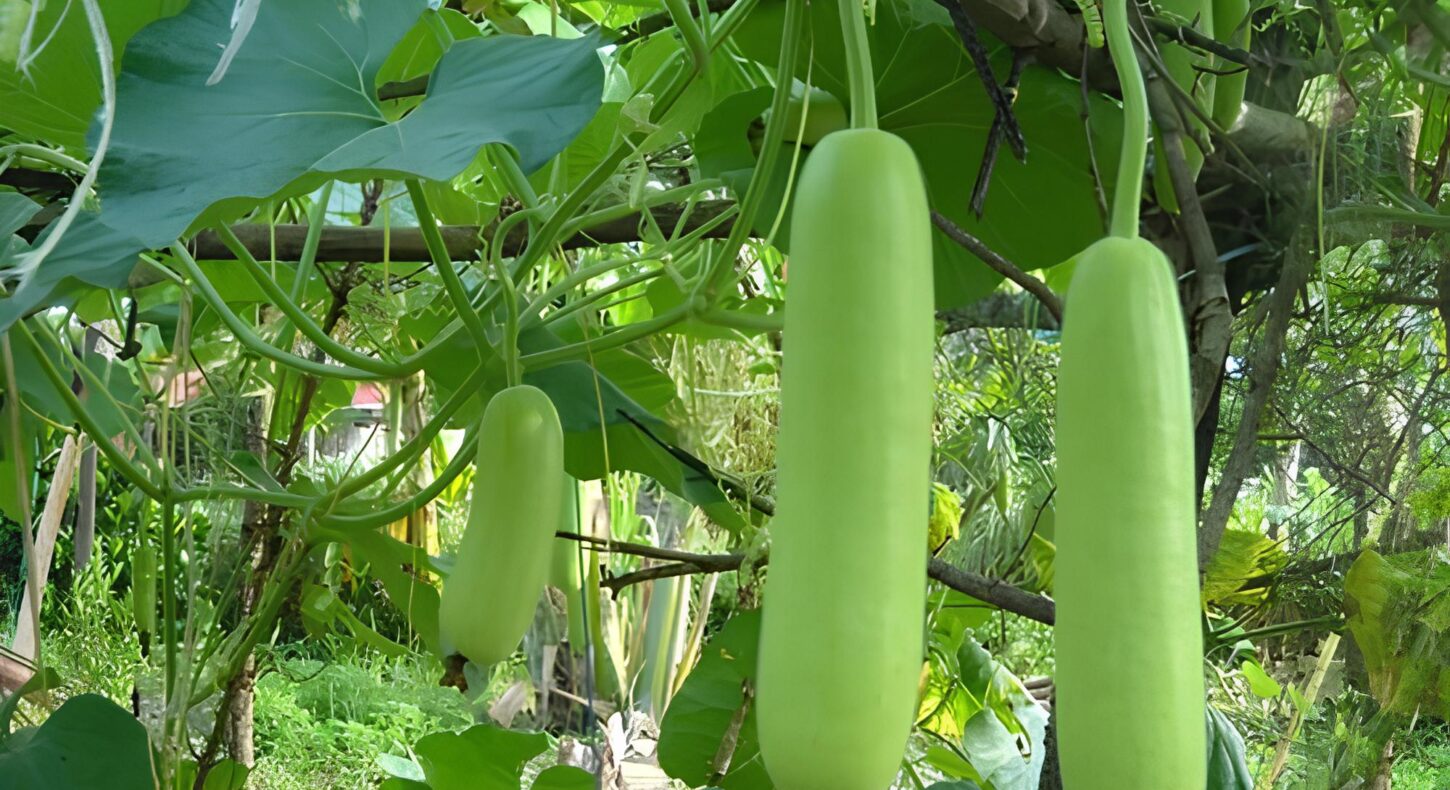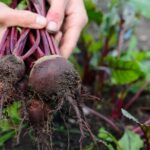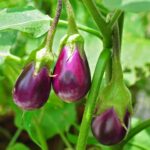Table of Contents
Introduction
Farmers and gardeners alike are constantly searching for methods to increase yields and create crops that are healthier and more plentiful. VNR bottle gourd seeds are a game-changer in the field of bottle gourd growing. These seeds have completely changed the way bottle gourds are grown. They were created by renowned agricultural research business VNR Seeds. VNR bottle gourd seeds provide farmers and gardeners with the chance to increase yields while taking advantage of a number of other advantages thanks to their excellent genetics and carefully chosen features.
We’ll delve into the world of VNR bottle gourd seeds in this extensive tutorial, and discover how to use them to build a flourishing, fruitful garden. We’ll cover all you need to know to get amazing results from your bottle gourd crop, from comprehending the special qualities of these seeds to becoming an expert in growing and maintenance.
Recommended Bottle Gourd Seed Varieties
Hybrid bottle gourd seeds are available for purchase from various online sources, offering different varieties suited for cultivation. Here are some notable hybrid varieties and their characteristics:
Hybrid Varieties:
- Sarpan F1 Hybrid : This type boasts a very high yield and features less hairy fruit, making it easier to handle and harvest.
- TNAU Hybrid : The Tamil Nadu Agricultural University has developed several hybrids, including TNAU Bottle Gourd, which are bred for specific climatic conditions and pest resistance.
- Pusa Varieties : Varieties such as Pusa Summer Prolific Long and Pusa Manjari are recognized for their adaptability and productivity in various environments.
- Arka Bahar : This variety is noted for its good fruit quality and resistance to common diseases affecting bottle gourd.
High-Yielding Options:
- VNR Sarita F1 Hybrid : Known for its green color and elongated shape, this variety is popular for its high yield and quality.
Understanding VNR Bottle Gourd Seeds
The bottle gourd seeds from VNR are not like other seeds. They are the product of years of intensive study and development that brought together cutting-edge agricultural science and conventional breeding methods. VNR bottle gourd seeds are unique from traditional kinds due to their carefully chosen genetic makeup, which provides producers with a number of benefits.
The excellent germination rate of VNR bottle gourd seeds is one of its most remarkable qualities. Nearly every seed you sow will grow into a healthy plant thanks to these seeds’ remarkable germination rate of over 90% when kept and planted correctly. This high success rate results in a more consistent and fruitful garden while also saving you time and resources.
The tolerance of VNR bottle gourd seeds to typical diseases and pests that frequently afflict bottle gourd crops is another important benefit. These seeds have a built-in resistance to diseases like powdery mildew, downy mildew, and other viral infections thanks to selective breeding. Because of their increased resistance to disease, VNR bottle gourd seeds reduce crop losses and the need for chemical pesticides, making them a great option for organic and environmentally concerned gardeners.
Preparing Your Garden for VNR Bottle Gourd Seeds
It’s important to properly prepare your garden in order to get the most out of your VNR bottle gourd seeds. These seeds do best in soil that is well-drained, rich in nutrients, and contains a lot of organic matter. To ensure ideal growth, bottle gourds need at least 6-8 hours of direct sunlight per day, so start by choosing a bright spot in your yard.
Measure the pH of your soil first; you want it to be between 6.0 and 7.0, which is slightly acidic to neutral. If required, use sulphur to lower the pH or lime to raise it. Add a lot of organic stuff to the soil after that. For your VNR bottle gourd plants, well-rotted compost, aged manure, or leaf mould will improve soil structure, promote water retention, and supply vital nutrients.
Because bottle gourds require warm soil with good drainage, prepare raised beds or mounds for planting. Additionally, this elevation aids in avoiding waterlogging, which can result in root rot and other problems. Consider adding some sand or perlite to your hard clay soil to help with drainage even more.
Sowing VNR Bottle Gourd Seeds: Timing and Techniques
When it comes to planting VNR bottle gourd seeds, timing is everything. Because of their sensitivity to cold and frost, these heat-loving plants must be left in the soil until the temperature has warmed to at least 60°F (15°C) and all risk of frost has passed. This usually entails planting in late spring or early summer in most areas.
Consider planting your VNR bottle gourd seeds indoors three to four weeks before the final anticipated date of frost to give them a head start. Make use of biodegradable containers that are packed with premium seed starting mix. With the pointy end of the seeds facing down, plant them about an inch deep. To keep the soil at 70–80°F (21-27°C), keep it continuously moist but not soggy. You may also position the pots in a warm spot or use a seedling heat pad.
It’s time to move the seedlings into the garden when they have their first true leaves and the weather is suitable. One week prior to planting, gradually expose the seedlings to outside environments to harden them off. While transplanting, put VNR bottle gourds in rows 6–8 feet apart, spacing the seedlings about 3–4 feet apart because these plants can get rather large and sprawl.
When the soil temperature has warmed up enough, wait to seed directly if you prefer. As indicated above, scatter two to three seeds each hill. Remove any weaker plants from each hill after the seedlings have sprouted and produced their first genuine leaves.
Water, Fertilizer, and Support
VNR bottle gourd plants require a lot of water and nutrients because they are fast-growing plants. Throughout the growing season, continuous care is crucial to maximizing yields.
Water is essential to your VNR bottle gourd plants’ proper growth. Due to their large root systems, these plants need deep irrigation on a regular basis in order to flourish. Try to supply one to one and a half to two inches of water per week, either via irrigation or rainfall. To prevent watering the leaves, which might encourage fungal diseases, water the base of the plants. Utilising organic materials such as wood chips or straw to mulch the area surrounding the plants will help keep the soil moist and discourage weed growth.
Another essential component of using VNR bottle gourd seeds to maximise yields is fertilisation. Since these plants need a lot of nutrients, frequent nutrient applications during the growth season are beneficial. Before planting, start the soil with a balanced, slow-release fertiliser. To encourage fruit development after the plants start to blossom and set fruit, switch to a fertiliser with greater phosphorus and potassium levels. Use fertiliser every three to four weeks, paying attention to the application rates suggested by the manufacturer.
VNR bottle gourd plants require a lot of support because of their fast growth behaviour. When planting, install a strong fence, trellis, or other vertical support structure. Gently guide the vines onto the support structure as they mature. This vertical growth reduces the risk of fungal diseases and enhances air circulation around the plants, saving space in your garden. Growing bottle gourds vertically also produces fruits that are straighter, more consistent, and less prone to rot or develop ground spots.
Pests and Diseases Management
Even though VNR bottle gourd seeds provide improved resistance to a number of common diseases, it’s crucial to stay watchful and take precautions to guarantee a healthy harvest. Maintaining your plants’ health requires regular monitoring in order to identify problems early and take immediate action.
Aphids, squash bugs, and cucumber beetles are a few typical pests that can harm bottle gourds. Consider using companion planting with pest-repelling herbs like nasturtiums or marigolds to manage these pests in an organic manner. In order to shield young plants from insect harm during the early phases of growth, row covers can also be used. As a last option, use neem oil or organic insecticidal soaps if pest numbers start to cause problems.
Disease-wise, even though VNR bottle gourd seeds provide better resistance, plants can still get downy or powdery mildew, which are fungal infections that can afflict them, especially in humid environments. Make sure to provide enough space between plants to allow for adequate air circulation, water the base of the plants, and steer clear of overhead watering in order to reduce the danger of fungal diseases. If you see any disease symptoms, take quick action to remove the afflicted leaves and, if needed, think about using an organic fungicide.
Harvesting and Storing Bottle Gourd
The abundant crop that comes with producing VNR bottle gourds is one of the most satisfying elements of the hobby. These plants have the potential to yield an abundance of fruits all growing season long with the right care. For maximum yields and highest quality, harvesting your bottle gourds at the right time and method is essential.
Pick young bottle gourds when they are sensitive and the skin is easily punctured with a fingernail for culinary purposes. This is usually the case when the fruits, depending on the type, are between 4 and 8 inches long. By regularly harvesting the immature fruits, you can maximise your overall output by encouraging the plant to continue producing.
Let the fruits of your bottle gourd plants reach full maturity on the vine if you’re planting them for decoration or to use as containers. When the stem that holds the fruit to the vine becomes brown and starts to dry up, you will know they are ready. The gourd’s skin will be tough and challenging to pierce at this point.
To harvest, cut the stem two to three inches above the fruit using clean, sharp pruning shears. Take caution when handling the gourds to prevent bruises or skin damage. Gourds that are young and fragile and meant for consumption should be refrigerated for a maximum of seven days. Mature gourds should be cured by spending several weeks in a warm, dry, and well-ventilated environment until the skin has completely dried and stiffened.
Saving Seeds from Bottle Gourd Plants
Some gardeners still want to store seeds for later use or experimentation, even though VNR bottle gourd seeds are hybrid varieties and the progeny may not have the same traits as the parent plants. Choose the healthiest, most robust plants with the best fruit qualities if you choose to save seeds.
When the stem becomes entirely dry, let the selected fruits reach their full maturity on the vine. To guarantee that the seeds are fully developed, harvest the gourd and keep it for at least two months in a cool, dry place. Cut open the gourd and take out the seeds once it’s dry and the seeds shake freely inside.
Rinse the seeds under water to clean them and get rid of any pulp or dirt. To ensure they dry fully, spread out the cleaned seeds on a screen or paper towel. After the seeds are dry, store them in a cold, dry area in an airtight container. Bottle gourd seeds can last for several years if stored properly.
Conclusion:
Planting bottle gourds from VNR seeds is a great way for farmers and gardeners to increase yields and have an abundant crop. You may build a flourishing bottle gourd garden that yields an abundance of delicious fruits by learning about the special qualities of these seeds and using the right growing methods.
VNR bottle gourd seeds offer a strong basis for success because of their exceptional germination rates, resilience to disease, and fast growth. You can fully utilise these exceptional seeds by planning your garden with care, giving it regular attention, and keeping an eye out for pests and illnesses.
Bottle gourds can be grown for crafts, food, or decoration; either way, VNR bottle gourd seeds provide a dependable route to a fruitful and satisfying gardening endeavour. So this season, why not give them a try in your garden? You’ll soon be reaping the rewards of your labour and marvelling at the amazing yields that VNR bottle gourd seeds can generate with a little care and attention.


